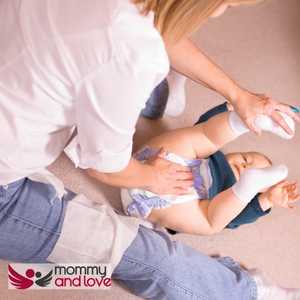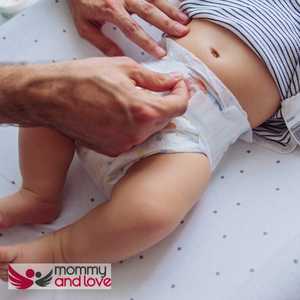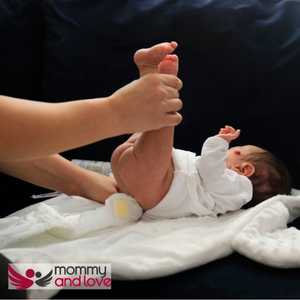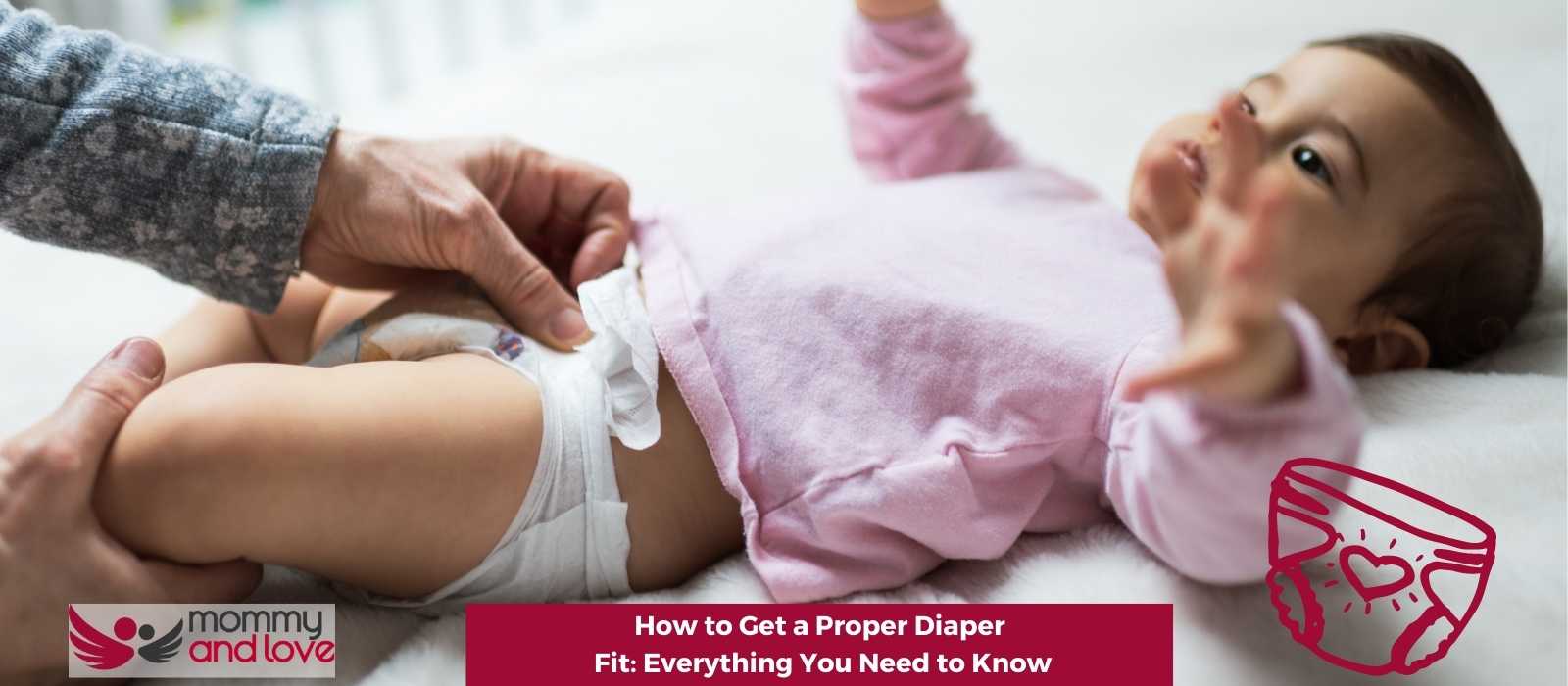A baby’s health and well-being start with ensuring they have a proper diaper fit. It is important to get it right from the beginning, as improper diaper fit can cause all sorts of problems for your little one, such as frequent leaks, skin irritation, diaper rash, and even urinary tract infections. In this blog post, we will teach you everything you need to know about how to get the correct size diaper fit for your child!
How Should a Diaper Fit?
Most people don’t think about how a baby’s diaper should fit, but it’s actually very important. Proper newborn diapers fit is a key to preventing leaks and keeping your baby comfortable. Here’s everything you need to know about getting the correct size diaper fit.
There are three main things to keep in mind when checking for regular diapers: size, snugness, and absorbency.
Size is the most important factor in the right disposable diaper fit. You want to make sure the baby’s diaper is not too big or too small. If it’s too big, it can sag and cause leaks. If the regular diaper is too small and below your child’s weight limit, it can be uncomfortable and cause red marks on your baby’s delicate skin.
To check for proper size, put the newborn diapers on your new baby and make sure the diaper fits and there are no gaps around the baby’s waist and legs. The baby’s diaper should be snug but not too tight. You should also be able to slide two fingers under the waistband if it is the right diaper fit.
Next, check for snugness. The diaper should be snug around your baby’s legs and waist, but not too tight. You should be able to slide two fingers under the waistband. If you can’t, the diaper is too tight and could cause red marks on your baby’s sensitive skin.
Finally, check for absorbency. The diaper should be able to absorb a good amount of urine without leaks. To test this, put the diaper on your baby and have them urinate. If the diaper leaks, it’s not absorbent enough.
If you keep these three things in mind, you’ll be able to find a properly fitting diaper for your baby.
Perfect diaper fit starts with the diaper tabs. If your baby has red marks on their tummy or legs, the diaper is too tight. The diaper tabs should be snug but not too tight, so you can fit two fingers under them.
Next are the leg cuffs. You want the diaper fits snug around your baby’s legs to create a seal and prevent leaks, but again, not too tight. You should be able to fit one finger under the leg cuffs. Keep in mind that cuffs tucked inside are one of the common causes of leakage.
If you can’t tell if the diaper is too tight or not, put it on yourself! It should feel comfortable, with some room to move. If it’s uncomfortable, it’s probably too tight.
Also, if you are planning on traveling, make sure the diapers can fit in your diaper bag.
For reference, here’s a diaper size chart with a weight range to help you choose the right size for your baby.
| Size | Baby’s weight range (lbs) |
| Newborn | up to 10 |
| Size 1 | 8 – 14 |
| Size 2 | 12 – 18 |
| Size 3 | 16 – 28 |
| Size 4 | 22 – 37 |
| Size 5 | 27 + |
| Size 6 | 35 + |
| Size 7 | 41 + |
Do Diaper Tabs Go In the Front or Back?
There’s a lot of debate on diaper tabs. Some say that they should go in the front, while others believe that diaper tabs belong in the back. So, where do diaper tabs really go?
The answer is simple: it depends on your baby’s build. If your baby has a rounder tummy, then diaper tabs should go in the front. This will provide extra support and prevent the diaper from sagging. On the other hand, if your baby has a longer torso, then diaper tabs should go in the back. This will give your baby more range of motion and prevent diaper rash.
Ultimately, it’s up to you where you want to place the diaper tabs. Just make sure that the diaper is snug and doesn’t sag, especially in the front or back. You want your baby to be comfortable, so take some time to experiment with different diaper tab positions until you find the perfect fit for your little one.
How to Choose the Right Diaper Size Based on Baby’s Weight
There are a few things you need to keep in mind when trying to figure out what diaper size to buy for your baby. The first is that diaper sizes vary somewhat from brand to brand. Also, diaper sizes are different than baby clothes.
Another thing to keep in mind is that a baby’s weight can fluctuate quite a bit from day to day (or even hour to hour). So, if you’re not sure what size diaper to buy, it’s a good idea to buy a few different sizes and then see which one works best for your baby.
Finally, it’s important to remember that babies grow quickly. So, even if you buy a diaper that’s a little too big for your baby today, chances are it will fit perfectly in a few weeks (or even days).
Should Diapers Fit Over the Belly Button?

Fitting diapers over the belly button or not is a common question that parents ask, and there isn’t necessarily a right or wrong answer.
It depends on your baby’s build and how they wear their diaper.
If you notice that the diaper is too tight or too small, it could be causing discomfort or even health problems. Diapers should be snug but not too tight, and they should allow your baby to move freely. If you’re unsure about the right size, be on the safe side of too big rather than too small. You can always adjust the fit as needed.
The too-tight diaper won’t allow the baby to move their legs and hips freely, which can cause hip dysplasia. The wrong diaper size will also rub against the skin and create irritation.
What Happens if the Diaper Fit Is Too Tight?

If the diaper fit is too tight, it can cause red marks or irritation on your baby’s skin.
If you notice any redness or discomfort, you should adjust the diaper size accordingly.
Diaper sizes vary based on weight and age, so be sure to check the diaper size charts which usually includes the age and weight limits before purchasing diapers.
The general rule of thumb is it’s better to have a larger size diaper instead of a smaller one. A diaper that is too tight may cause leaks and blowouts, but the diaper is too small for your baby’s butt can cause serious discomfort for your little one. The diaper should fit your baby’s body.
If you’re unsure about what size to get, you can always ask a sales associate or even the manufacturer for guidance. And, of course, you can always experiment with a few different sizes to see what works best for your baby.
Whatever you do, just make sure the proper diaper fit is comfortable for your baby and doesn’t cause any irritation.
When to Change Diaper Sizes?
One of the most common questions I get from new parents is when to change diaper sizes. The answer, unfortunately, is not a simple one. Just like with baby clothes, babies come in all shapes and sizes, so there is no single answer that fits everyone. However, there are some general guidelines you can follow to help you decide when it’s time to move up a size.
The first thing to keep in mind is that diaper sizes are not based on age. Instead, they’re based on your baby’s weight and waist size. Most store brands have a handy diaper sizing chart that you can reference, so be sure to consult that before making your purchase.
In general, you’ll want to start with the smaller size and move up as needed. If you notice that your baby is leaking through their diaper more often, or if the waistband is leaving marks on their skin, it’s probably time to go up a size.
Of course, every baby is different, do different brands. Trust your instincts and go with what feels right for your little one. Changing diaper sizes doesn’t have to be a stressful experience, so take your time and find the perfect fit for your baby. If one doesn’t fit your baby, find other brands with a flexible fit. With a little trial and error, you’ll get the hang of it in no time!
Do You Need a Larger Diaper Size at Night?

If you’re wondering whether or not you need a larger diaper size at night time, the answer is maybe.
It depends on a few factors, such as how much your baby eats and drinks during the day, how often they urinate, and whether or not they have solid bowel movements.
If your baby is eating and drinking more during the day, they will likely need a larger diaper at night. Additionally, if your baby is urinating more frequently or has solid bowel movements, a larger diaper may be necessary. Ultimately, it’s important to monitor your baby’s output and adjust their diaper size accordingly.
Do the Diaper Ruffles Go In or Out of the Diaper?
If you’re unsure, simply look at the diaper and find the tabs. The ruffles should be on the outside of the diaper. If they’re not, then you’ve put the diaper on backward!
Most parents have been there – it can be tricky to figure out which way a diaper goes on a baby. After all, there are all those straps and snaps, and let’s not forget about the ruffles. So, which way do the diaper ruffles go?
Here’s a quick tip: the ruffles on a disposable diaper should always be on the outside of the diaper. If they’re not, then you’ve put the diaper on backward!
Of course, every diaper is different, so it’s always a good idea to consult the instructions and size guidelines that came with your particular brand and model of the diaper. Most brands have them but other diapers don’t. But in general, the ruffles should be on the outside.
What Are the Signs That My Baby Needs a Bigger Diaper Size?
If you’re a new parent, one of the many things you’ll have to learn is how to tell when your baby needs a bigger diaper. It’s not always obvious, but there are some telltale signs that will let you know it’s time to move up to the next size.
Here are four signs that your baby may need a bigger diaper size or move to the next size:
- They seem uncomfortable in their current diapers and pull-ups. If you notice your baby squirming and wriggling more than usual, it may be a sign that they’re uncomfortable in their diaper. This is often the first sign that you have the wrong size and they need a larger size.
- The diaper is sagging or drooping. A diaper that’s too small will often sag or droop in the back, which can cause leaks. If you notice this happening, it’s time to move up to a larger size.
- The diaper is leaking. This is probably the most obvious sign that you need a bigger diaper. If your baby’s current diapers are leaking, it’s time to try a larger size.
- The diaper is leaving red marks on your baby’s skin. If you notice redness or irritation around the diaper area, it could be a sign that the diaper is too small. This is often caused by the diaper being too tight and not allowing enough air circulation.
What Are the Signs That My Baby Needs a Smaller Diaper Size?
If your baby is starting to show signs of discomfort when wearing a diaper, you might have the right diaper and it might be time to switch to a smaller size. Here are some common signs that your baby might need a smaller diaper:
- Your baby’s skin appears to be irritated or red around the diaper area.
- Your baby seems to be uncomfortable when wearing a diaper, often squirming or crying.
- The diaper doesn’t seem to fit as well as it used to, appearing too loose or leaving red marks on your baby’s skin.
- If are diaper leaks during the diaper change, it means your baby is wearing a small diaper and it does not fit properly.
If you notice any of these signs, it’s a good idea to try a smaller size diaper and see if it makes a difference for your baby.
Conclusion
Choosing the right diaper size for your baby can be a bit of a process, but it’s important to get it right. After all, a properly fitting diaper will be more comfortable for your baby and will help to prevent leaks. You can use a diaper size chart as a reference.
Keep an eye out for signs that your baby may need a larger size, such as discomfort, leaks, or redness around the diaper area. All of this might be overwhelming at first, especially if you are a first-time parent, but once you get used to it, changing diapers and avoiding diaper blowouts will be a breeze.

This article was written by: Gian MIller – Full-Time Writer, Baby Whisperer & Dad of 3.
Gian spends a lot of his time writing. A self-proclaimed baby whisperer, Gian has been through it all with his own children and is passionate about sharing his hard-won wisdom with other parents. When he’s not writing or changing diapers, you can find him playing the guitar or watching baseball (or preferably both at the same time).




